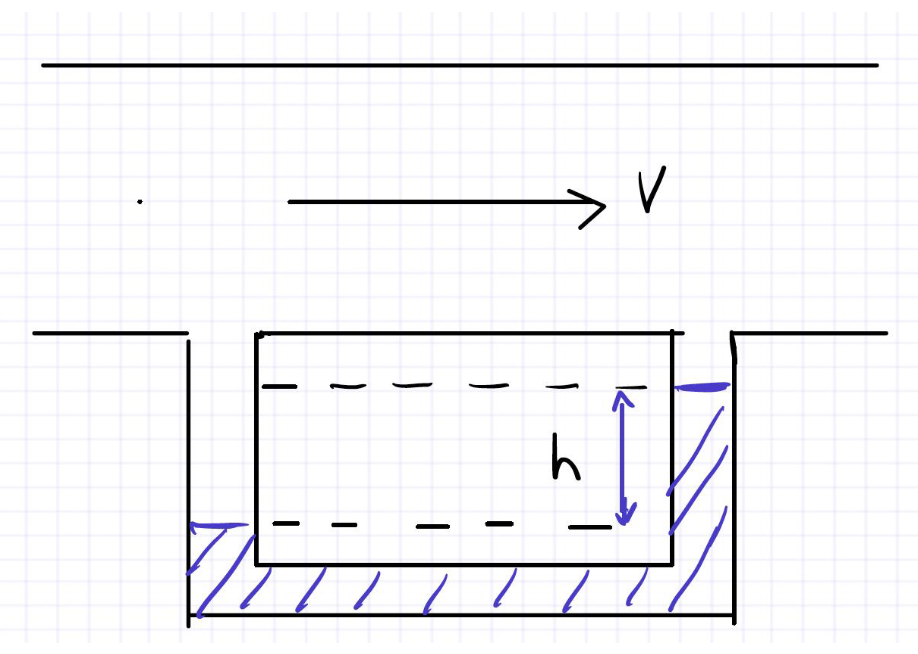Pressure on a Fluid Parcel
- Acts in compression and uniformly
- Pressure acts normal to a surface
Relation to Acceleration
The pressure gradient is
Also note that
Net Force Due to Pressure
On a square parcel…
- On the left…
- On the bottom…
- On the right…
- On top…
= =
Hydrostatics
If friction is negligible and the fluid is at rest…
Pressure due to the weight of a liquid of constant density is given by
As an aside, we can use this relationship to find the gage pressure at a point due to hydrostatic effects of gravity which is moving straight down from a free surface
Since then
Gauge Pressure
An add-on to atmospheric pressure…
If gauge pressure is 1.5 Pa, then we need to add 1.5 Pa to our
Using Gauge Pressure
Only the pressure difference from atmospheric pressure matters in momentum balances, where
Specific Weight and Gravity
Specific weight:
- [] if we examine units we can get
Specific Gravity:
Manometer
Using the concept of gauge pressure and specific weights and gravity…
The manometer uses a no-slip surface (velocity at the surface is 0 and are “static” pressures)

We expect the pressure at the left tube to be greater than the pressure at the right tube. When we move up volume wise, pressure decreases.
Or…
In the manometer, the fluid is not moving
- The velocity profile is a parabola with a minimum to the right (kind of like how you would cap a rocket)
Manometer Solving Tips
- We basically solve these questions by determining pressure difference relationships
- If we decrease in height to a new fluid we increase in pressure, otherwise we decrease in pressure
- Out relationship here is
If we are given the pressure at a station and it is = to atmospheric pressure, then we can use gauge pressure from Pressure and Hydrostatics.